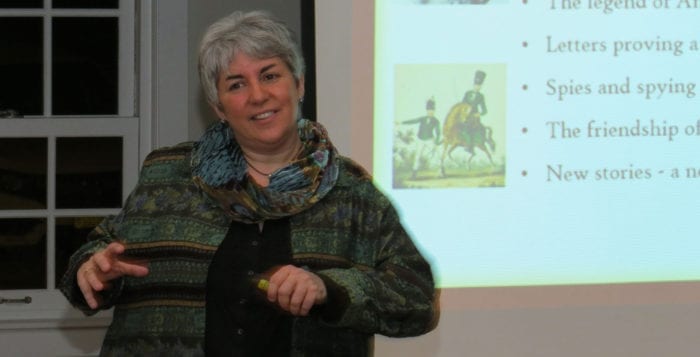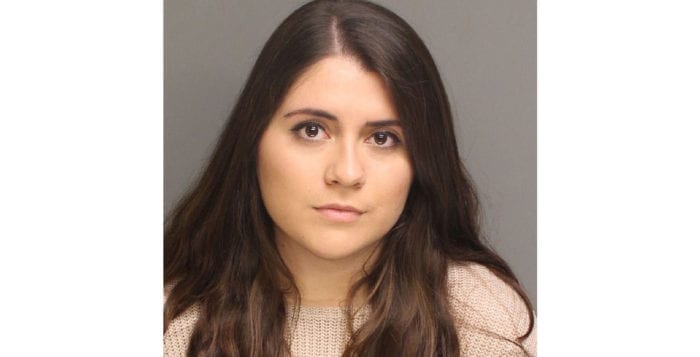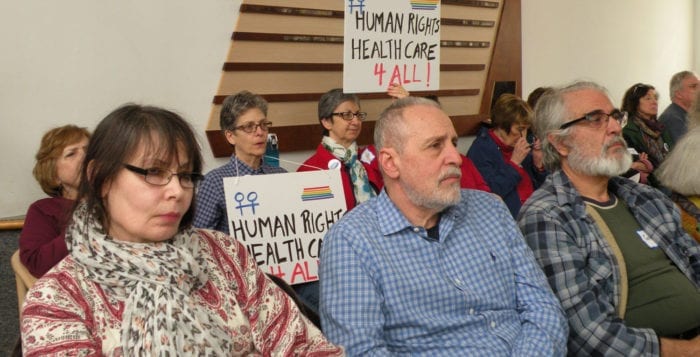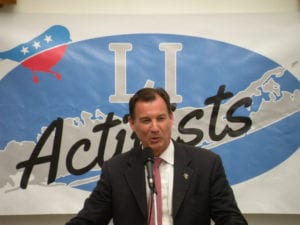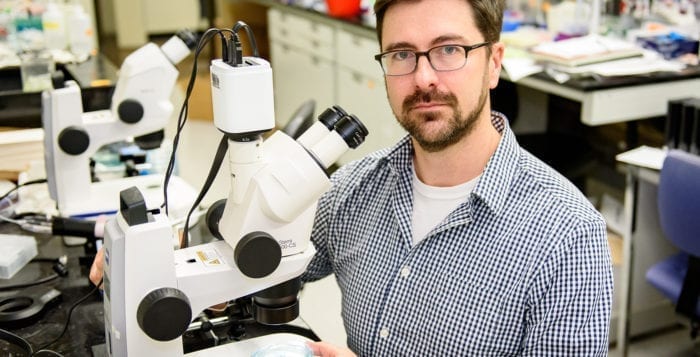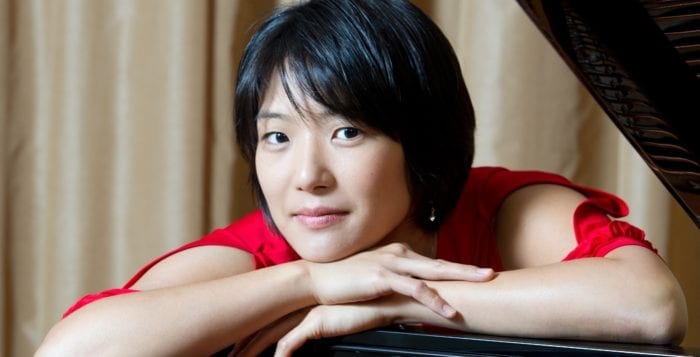Things will look a little different at Ward Melville High School’s graduation ceremony this year.
Gone now are the separate green and gold gowns for males and females. Replacing them, are gender-neutral green ones with gold stoles that feature the high school emblem, breaking the school’s half-century commencement tradition.
“This year, as we mark the 50th anniversary of the Three Village Central School District, we are focusing on honoring the traditions of the past, while building new traditions for our future,” Ward Melville High School Principal Alan Baum wrote in a letter posted on the school district’s website March 2.
 The letter came after nearly 100 students participated in a walkout March 1, protesting the news of even the possibility of a color change.
The letter came after nearly 100 students participated in a walkout March 1, protesting the news of even the possibility of a color change.
One of the factors considered in making the decision was to meet the concerns of transgender and gender-fluid students.
“In addition to creating a unified senior class, it is our hope that creating a unifying color scheme will eliminate the anxiety that is caused by forcing a young adult to wear a gown that labels them differently than how they identify,” Baum wrote in the letter. “This decision also reflects the progressive nature of our district, our high school and our community. Through the use of the unified gowns, we are no longer separating our students by gender; rather, we will be promoting a more inclusive practice at graduation.”
News of the gown change circulated on social media Feb. 28, prompting a number of students to start petitions and participate in the walkout.
Seniors Brianna LaSita, Charlotte Schmidt and Isabelle Antos were motivated to start a petition on Change.org to support same-colored gowns. The trio sent a joint statement to The Village Times Herald to explain their motive.
“We created our petition in response to the petition that was made in support of keeping the traditional colored gowns,” the three wrote. “As it gained supporters and hateful comments, we decided we needed to support our class and protect our LGBTQA+ peers from the hateful rhetoric featured on signs during the walkout.”
Some of the signs held by students had slogans like “Straight Lives Matter” and “Don’t Tread On Me.”
David Kilmnick, CEO of the LGBT Network, a Long Island-based nonprofit, said the organization heard about the debate after the walkout. He said a few students from the school emailed his group seeking help, claiming they heard anti-transgender rhetoric spewed from students and teachers.
“Through the use of the unified gowns, we are no longer separating our students by gender; rather, we will be promoting a more inclusive practice at graduation.”
— Principal Alan Baum
The CEO said the decision to have one gown color solves the issue of transgender children feeling a sense of anxiety when it comes to choosing a color. He said when making such a decision, most feel that if they choose the color that represents their true identity, they’ll risk harassment from their peers. If they don’t choose the color, they’re “not feeling whole in who they are.”
“This is not as simple as black and white, or even about green and gold anymore — this fair debate over tradition has devolved into an excuse to promote transphobic hate speech,” the petitioner organizers wrote. “That is not what our community is about.”
As of March 8, their petition to support the same colored gowns had almost 700 signatures. One petitioner wrote on the site: “I would be so grateful if we can all leave Ward Melville more loving and empathetic individuals, we should always be working to ensure that all of our class feels comfortable every day but especially a day as special as graduation.”
A senior at the high school, who asked to remain anonymous, said many students were disappointed by the color change, especially after having already had their senior portraits taken adhering to the now-former color tradition. The school rectified the problem by notifying parents March 7 that students could retake their graduation photos at no additional cost.
According to the student, it was felt the gown change was made by the administration after consulting with only a few students.
The senior wrote that even though a portion of the student body felt the change was only based on the needs of transgender students, those upset were not discriminating against anyone, but were just hoping to continue tradition.
“My issue, and the issue that my peers that participated in a walkout protest during class today share, is that a choice is being made that benefits a minute minority of people, not the majority,” the student said. “This is an underlying theme that is playing out across the country. Lawmakers, educators and school administrators are making changes based on what a small population wants, not what the majority of the school or state or the entire nation feels is right.”

Jennifer Segui, who is the mother of two children at W.S. Mount Elementary School, said she was disappointed when she read a number of negative reactions on social media after the decision.
“It would have been so beautiful if the idea of the new graduation gowns had been embraced by all students and parents from the beginning,” Segui said. “Sadly, that didn’t happen. Hopefully, people can learn and move forward.”
But the anonymous student said those who participated in the protest felt as though the administration did not listen to opinions from most of the students when making the decision.
“Instead of listening to our voices, our principal brought our protest in the auditorium, and basically stifled our statements in what was a clear attempt to silence us,” the student said. “It is clear, to me at least, that the school has no intention of doing what is right. They would rather follow in popular culture than face the fact that what they are doing is blatantly unfair. Again, I carry no prejudice. I speak with the basic ideal of a democratic republic that what is done should be decided by the majority.”
Ward Melville isn’t the first Long Island school to break tradition, following in the footsteps of Paul D. Schreiber High School in Port Washington and Island Trees High School in Levittown. Kilmnick said he feels the administration made a bold move in the right direction.
“I think we’re seeing a movement,” Kilmnick said. “Even though Ward Melville is the third school on Long Island to do this, I think we’ll see a lot more on Long Island. And we’re certainly seeing schools across the country getting rid of the separate colored gowns because they’re not inclusive for all students. What the change does, in fact, is let everyone in Ward Melville wear green and gold, from looking at the new gown, and it allows the entire school to move forward as one community, and to celebrate graduation in a safe, inclusive manner — and make graduation celebratory for all.”


